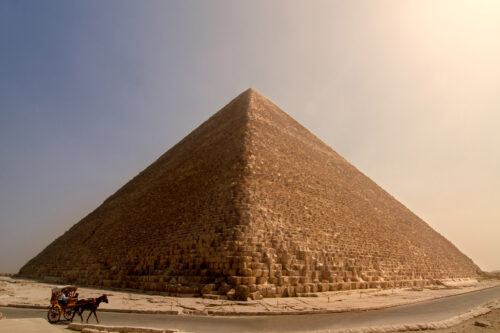Image courtesy of Flickr
The Great Pyramid of Egypt is one of the Seven Wonders of the World, and deservedly so. Composed of thick, heavy stone slabs on the outside and multiple rooms on the inside, Khufu’s Pyramid has drawn thousands of archaeologists and tourists to marvel at its enigmatic architecture and ponder how it was built 4,500 years ago. “It’s both fascinating and frustrating that we still don’t know how this monument was built,” said Sébastien Procureur, one of the scientists from the French Alternative Energies and Atomic Energy Commission (CEA). Today, inferences from particle physics have revealed new details about its complex internal structure that may prove more awe-worthy than scientists and historians could have ever imagined.
The inside of the pyramid is divided into multiple spaces, including the so-called King and Queen chambers, corridors connecting the chambers, a grand gallery, and, as an international team of researchers named ScanPyramids recently discovered, a nine-meter-long cavity with a complicated Chevron structure close to the North Face of the pyramid. The Chevron, an inverted V-shape, itself pokes out from the original entrance and consists of huge gabled limestone slabs, but the internal structure belying it has eluded archaeologists and physicists alike until the advent of muon detectors.
Muons are a type of subatomic particle, similar to an electron, that are released in the atmosphere by the interactions with primary cosmic rays originating from the universe. Just like other subatomic particles, matter on Earth is capable of absorbing some of the muons from the atmosphere. The fraction of muons absorbed depends on the density of the matter. Measuring how many muons come through matter, or muon flux, can reveal a 2D map of the density of an object, depicting its inner structure. If one measured more flux than expected behind a structure, this would imply the presence of a hidden cavity within the structure. Procureur worked on the development of muon detectors during his research. “Now, after around 10 years, there is still a lot to do in muon imaging. Several startups have been created over the last few years. It’s very rewarding to think that there will be applications in the real world,” said Procureur.
The team was able to use strategically placed muon detectors to measure the muon flux distributions around the pyramid. By combining multiple 2D representations, they were able to estimate the dimensions and shape of this unknown void within a few centimeters of accuracy. This study proved a novel technique to elucidate the inner architecture of otherwise obscure historical wonders which can be used to understand and shed light on other structures, from ancient mausoleums to stone heads to ziggurats. “In some sense, it is a bridge between two civilizations, a way for all of us to “communicate” with these people,” said Procureur. The pursuit of such knowledge ties together advances in physics and history, so that our understanding of subatomic particles, the science of the future, can better inform us about the mysteries of our past.

